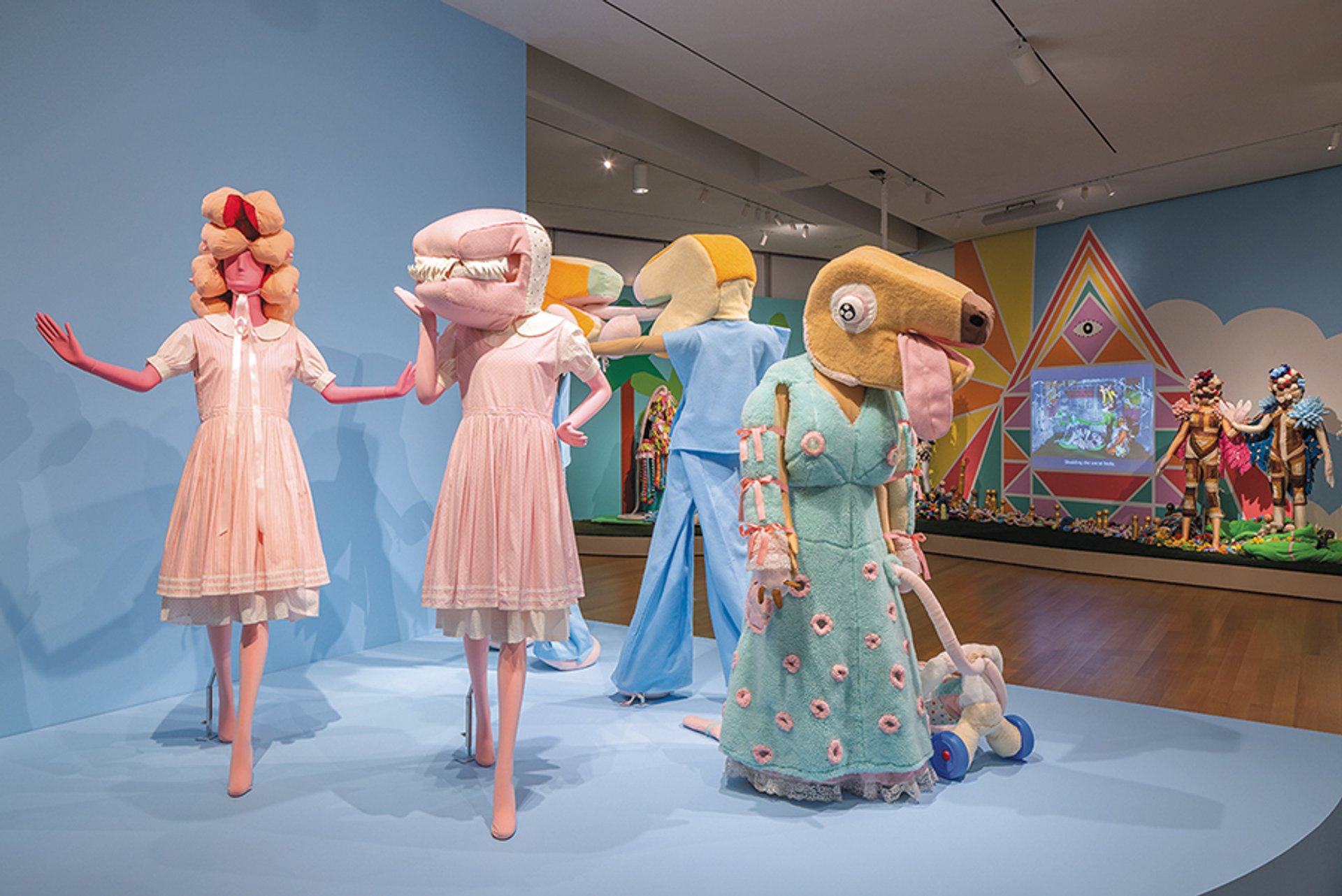‘We are all part of this intergalactic universe’: Saya Woolfalk’s solo show immerses viewers in her “Empathic Universe”
Saya Woolfalk: Empathic Universe at the Museum of Arts and Design (Mad) explores Woolfalk’s visionary world-building practice, spanning two decades of work that traces the evolution of fictional plant-and-human hybrid races that populate her so-called “Empathic Universe”—a place where the interconnectedness between beings is a central theme. In this exhibition, Woolfalk unfolds the Universe in five chapters, beginning with sculptures made from complex arrangements of textiles to videos and performances to immersive digital installations—all of which draw complex references from mythology, anthropology, technology and feminist theory. Woolfalk’s work is held in major museum collections, including at the Nelson-Atkins Museum of Art and the Seattle Art Museum.
The Art Newspaper: What are the origins of the Empathic Universe?
Saya Woolfalk: The project started when I came back to New York from Brazil, where I was living for two years, with Winter Garden: Hybrid Love Objects (2005) at MoMA PS1. It was before I had fully conceptualised it, but it’s like the creation myth of the Empathic Universe, with two Yoruba-inspired ancestral-worship garments tossing back and forth a topsy-turvy half-black, half-white doll in the accompanying video. The performers go back and forth between caring for this oversized representation of race and trying to dismantle it. The Yoruba-inspired figures became the ancestors of the Empathic Universe.
After living in Brazil, I was thinking through representations of colonial encounters and relations through folklore, masquerade and so on. But the Empathic Universe came into sharper focus around 2006, when I was in the Whitney Independent Study Program—a somewhat critical, Marxist programme—and we were thinking about utopian possibilities. These were ideas that were in my community at the time and became the parameters for the work.
Fictional plant-and-human hybrid races populate Woolfalk’s colourful, idyllic “Empathic Universe”
Photo: Jenna Bascom; Courtesy the Museum of Arts and Design
What is the meaning of the Empathic Universe?
There is a story world that holds everything together for me as an artist, but I want people to experience the Empathic Universe for themselves without having to read all the content of that world. There is a part of the exhibition where you are fully immersed in digital video installations. What I hope is that you feel in your body how connected we all are to nature and to one another—that we are all part of this intergalactic universe.
Although my work is quite critical and political, I also want there to be an objective of creating community and empathy. The end result is not necessarily a critique, but a potential new experience of being in the world and being with one another. When I started, I was interested in questioning how to enact a utopia, or how to create a utopia through collective action and social transformation. What I have subsequently worked on is a much more expansive idea of what the Empathic Universe means.
How has the Empathic Universe evolved?
My earliest installation at Mad is Lovescape (2003), a series of garments I made in graduate school—when I was thinking about feminism, sexuality and desire, and trying to come up with alternative visions for representations of female bodies. The stakes of feminism are very much a part of the Empathic Universe. The most recent work is Plucked from a Jangling Infinity (2023)—an enormous hanging glass piece that’s a human silhouette shattered into a million pieces and projected upon. It feels like seeing a Big Bang moment. The title comes from a poem my mother-in-law wrote when she was pregnant with my husband. I love this connection to women’s bodies and the universe in this work. None of these things are necessarily explicit or something you would get from looking at the work or need to understand. But when you’re in the space, there’s something that’s very grounding. Each installation holds its own space but turns into one immersive video installation.

Woolfalk primarily crafted Lovescape, pictured here in the Mad show, at her kitchen table while still a student
Photo: Jenna Bascom; Courtesy the Museum of Arts and Design
You engage with both traditional crafting and digital technologies. What role does craft have in your practice?
I spent my childhood going back and forth between the US and Japan, and my grandmother in Japan taught me how to craft. My family had a textile company, so we always had textiles around the house. Then, in the US, I had a wonderful teacher who taught me more traditional European arts. When I started building my own work in college, crafting and working with textiles felt very natural and immediate. What I love about works like Lovescape is that much of it was made without a studio—just on my kitchen table, and it’s craftwork. But it turns into something that feels more monumental, even though it’s an ordinary object made with very ordinary materials. I hope people find the works accessible and can relate to them because of that.
What response do you hope viewers have to the exhibition?
The fourth floor is an introduction to the concept of the Empathic Universe, and the fifth floor is a full immersion into the Universe. I hope there’s a sense of interconnectedness and presence, and that it inspires a sense of hopefulness and empathy in light of the recognition that we do live in a very complicated contemporary reality.
- Saya Woolfalk: Empathic Universe, Museum of Arts and Design, New York, 12 April–7 September 2025




